
Astonishing Maras Salt Mines: Salineras de Maras Cusco Tour
Halfway between Cusco and Machu Picchu are the Salineras de Maras (Maras Salt Mines) — an ancient patchwork of terraced pools filled with mineral-rich water that cascades down the side of the Qaqawiñay mountain.
Since before the advent of the Inca Empire local inhabitants have channeled the saline water through a system of canals. Salt is hand-harvested from some 4,500 shimmering terraced pools. This sustainable mining practice, carried out about 25 miles (40 kms) northwest of Cusco, dates back well over 500 years.
Nearby, is the ancient community Kachi, which means “salt” in the indigenous Quechua language.
Where the Salt Comes From at Maras
Deep inside Qaqawiñay is a giant deposit of sea salt, thrust up from a pre-historic ocean bed 110 million years ago during the formation of the Andean range. Spring water flowing through the massive salt deposit trickles out from a cave. During the dry season, the water is diverted into the magnificent system of pools.
A Brief History of the Maras Salt Mines
The Maras Salt Mines trace at least as far back as the Wari civilization, which predates the Inca. However, it was the Inca who recognized the potential of the Maras salt pans. They expanded them to harvest more salt for trade across their expansive empire.
The Significance of the Maras Salt Mines Today
Today, the local Maras and Pichingoto communities hold exclusive mining rights to the salt pans. These communities have inherited the knowledge and expertise passed down through generations, ensuring the preservation of this ancient practice.
The estimated 4,500 Maras “salt pans” have an average area of about 5 m² each. Every family in the town of Maras and Pichingoto is responsible for maintaining their own pool.
The process begins by channeling the Salineras stream into each pool, allowing the water to evaporate naturally. It takes approximately three weeks to a month for the water to completely evaporate, leaving behind precious salt crystals. Each pool yields between 350 and 450 pounds of salt.
The deliciously distinctive salt is shipped to markets in the region, and exported abroad as a gourmet spice.
While the primary purpose of the salt pans remains salt production, Salineras de Maras is also one of the most popular attractions for visitors exploring the Sacred Valley.
Tourists can enjoy breathtaking vistas and learn about the cultural and historical significance of this ancient site. Please note, however, that access to the crystallized ponds is currently off limits to tourists to prevent contaminants reaching the pools.
The Salt Mines of Maras is on the tentative list for inclusion to UNESCO’s World Heritage sites.
Culinary and Healing Properties of Maras Pink Salt
Salt, hand-harvested from the Maras Salt Mines, is renowned for its beautiful pale pink color, coarse texture, and mild, complex flavor. This gourmet salt adds a touch of elegance to culinary creations and is highly valued by chefs and food enthusiasts alike.
Another remarkable aspect of the Maras salt pans is the exceptional mineral content of the salt. Comparable to the renowned pink Himalayan salt, Maras salt boasts a plethora of essential minerals, including potassium, calcium, magnesium, and trace elements. These minerals not only lend the salt its distinctive pink hue but also contribute to its nutritional and medicinal properties.
Many people swear by the healing and anti-inflammatory benefits of Maras salt. Whether used for cooking or bathing, this mineral-rich salt offers a rejuvenating experience that can soothe sore muscles and promote overall well-being.
Sustainable Salty Souvenirs from the Source
When visiting the Maras salt mines, you have the opportunity to take home a truly special souvenir —authentic Maras salt straight from the source. Along the pathway leading to the salt pools, you’ll find numerous stalls offering a variety of Maras salt products.
You can purchase 1kg bags of pure Maras salt without any added flavoring, allowing you to experience the natural taste and quality of this exceptional salt. Additionally, smaller bags of plain or smoked Maras salt are available for grilling enthusiasts seeking to enhance the flavor of their meats. These stalls also offer a range of other Peruvian products, including craft chocolates infused with Maras salt and non-edible, aromatic bath salts.
How to Reach the Maras Salt Mines
Reaching the Maras salt mines is an adventure in itself, allowing you to explore the breathtaking landscapes of Peru’s Sacred Valley. There are several options, each offering a unique experience.
- Mountain Biking: The mountain biking is an exhilarating way to reach the salt mines. This route also takes you through the captivating Moray archaeological complex, believed to have been an experimental agricultural laboratory during the Inca Empire.
- Horseback Riding: One of the best ways to experience the Sacred Valley’s stunning landscapes is to take the reins on horseback. As you ride at your own pace—trotting, prancing, or galloping—you’ll have opportunities to pause at scenic overlooks that beg for a photo.
- ATV Maras: Hop on a 4-wheel ATV (quad bike) and zoom through the picturesque Andean countryside. These tours typically make stops at the Maras Salt Mines and the Moray archaeological site. You will receive a security briefing before embarking on the thrilling ATV adventure.
- Hike: If you prefer a more leisurely pace, hiking is an excellent option. The trek to the salt mines and Moray allows you to fully appreciate the sweeping vistas of the Sacred Valley. With mostly flat and downhill terrain, this hike is ideal for acclimating to the altitude before embarking on more challenging trails, like the famous Inca Trail to Machu Picchu.
Organized Tours
A visit to the Maras Salt Mines is an easy add-on to a Peru package. The tour typically begins with a pick-up from your Cusco hotel and takes approximately one hour to reach the salt mines. An expert local guide will provide insightful commentary throughout the tour, and after the visit, you will be dropped off at your hotel or continue your journey to the Sacred Valley.
Local Transportation
For those seeking a more “authentic” approach, it is possible to reach the Maras Salt Mines using local transportation. From Cusco, you can take a combi or colectivo (a public shuttle van or shared taxi) towards Urubamba. Inform the driver that you’ll be getting off in Maras. From there, you have the option to either walk for approximately an hour to the salt pans or hire a taxi for a 10-minute ride.
Plan Your Visit to the Maras Salt Mines
Visiting the Maras salt mines is an experience that should not be missed during your trip to Peru. To ensure a seamless and enriching visit, it is advisable to plan ahead and make necessary arrangements.
Here are some tips to help you make the most of your visit to the Maras salt mines:
- Timing: The salt mines are open year-round, but it’s best to visit during the dry season (May to September) when the weather is more favorable and, more importantly, when the salt is harvested.
- Transportation: Depending on your preference, you can hire a guide and driver, rent a bike, or join a guided tour to reach the salt mines. Consider your fitness level and comfort when choosing the mode of transportation.
- Attire: Wear comfortable clothing and sturdy shoes suitable for walking or biking. Don’t forget to bring a hat, sunscreen, and plenty of water to stay hydrated.
- Guided Tours: Engaging a knowledgeable guide can greatly enhance your experience at the salt mines. They can provide valuable insights into the history, culture, and geology of the area, enriching your understanding of this unique site.
- Respect the Environment: When visiting the salt mines, be mindful of the fragile ecosystem and cultural heritage. Follow any guidelines provided by guides or signs to ensure the preservation of this natural wonder.
 Mummies the Word
Mummies the Word 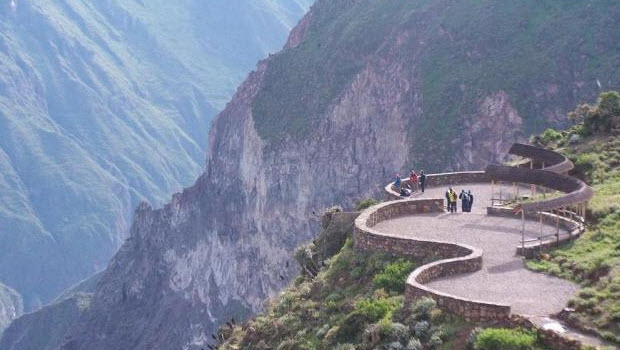 Entry fee to Colca Canyon Tourist Route set to nearly double for foreigners on Jan. 1
Entry fee to Colca Canyon Tourist Route set to nearly double for foreigners on Jan. 1 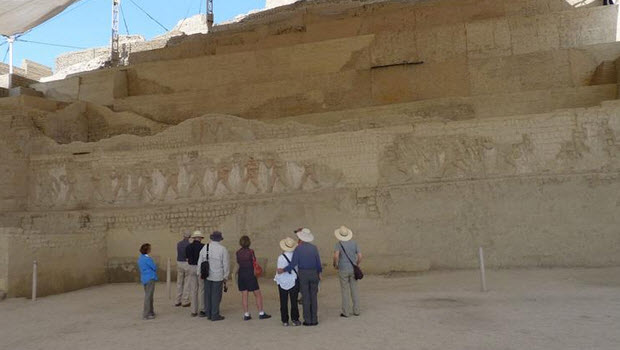 Blood, Sand and Sacrifice; Moche Archaeological Journey:
Blood, Sand and Sacrifice; Moche Archaeological Journey: 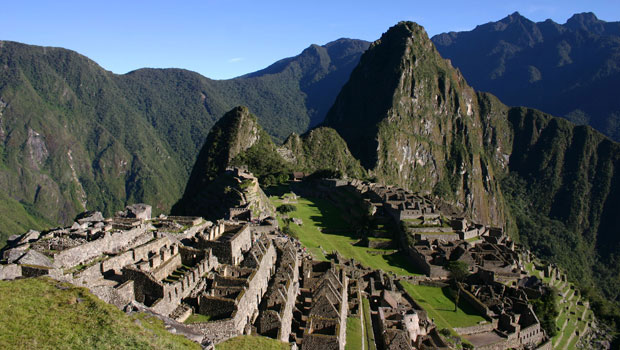 Mandatory tour guides and fixed routes coming soon for Machu Picchu
Mandatory tour guides and fixed routes coming soon for Machu Picchu 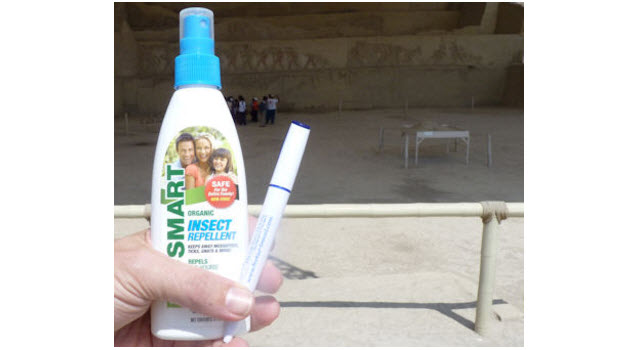 Organic EcoSMART insect repellent stands up to toughest Mochica mosquitos
Organic EcoSMART insect repellent stands up to toughest Mochica mosquitos 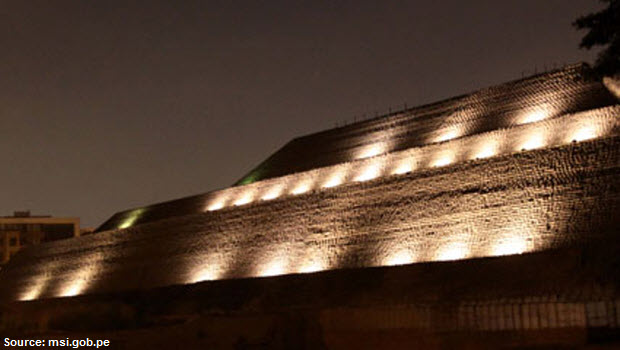 Peru to develop Lima’s unsung archaeological ruins for tourism
Peru to develop Lima’s unsung archaeological ruins for tourism  Hilos de Chinchero: traditional Cuzco weaving
Hilos de Chinchero: traditional Cuzco weaving